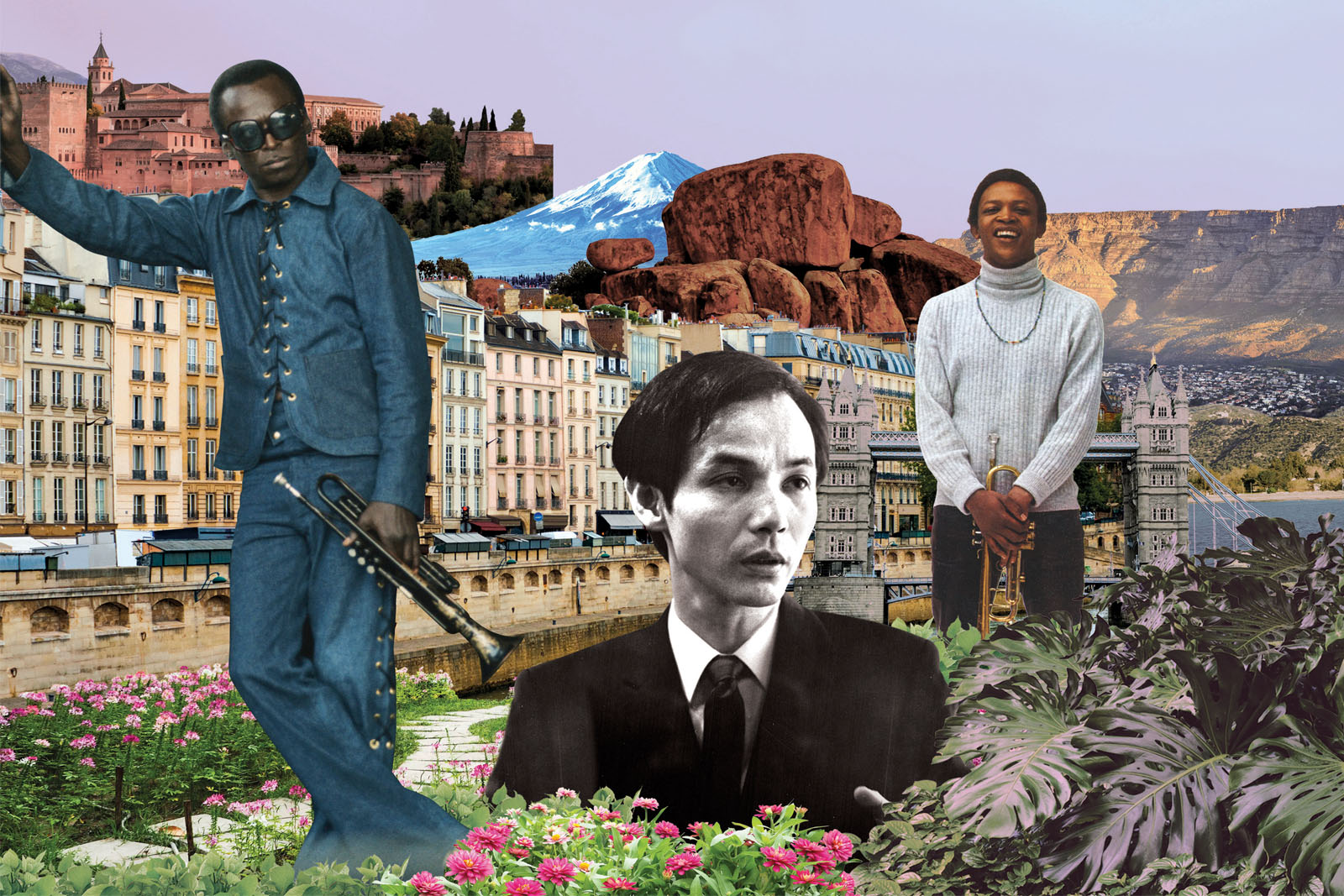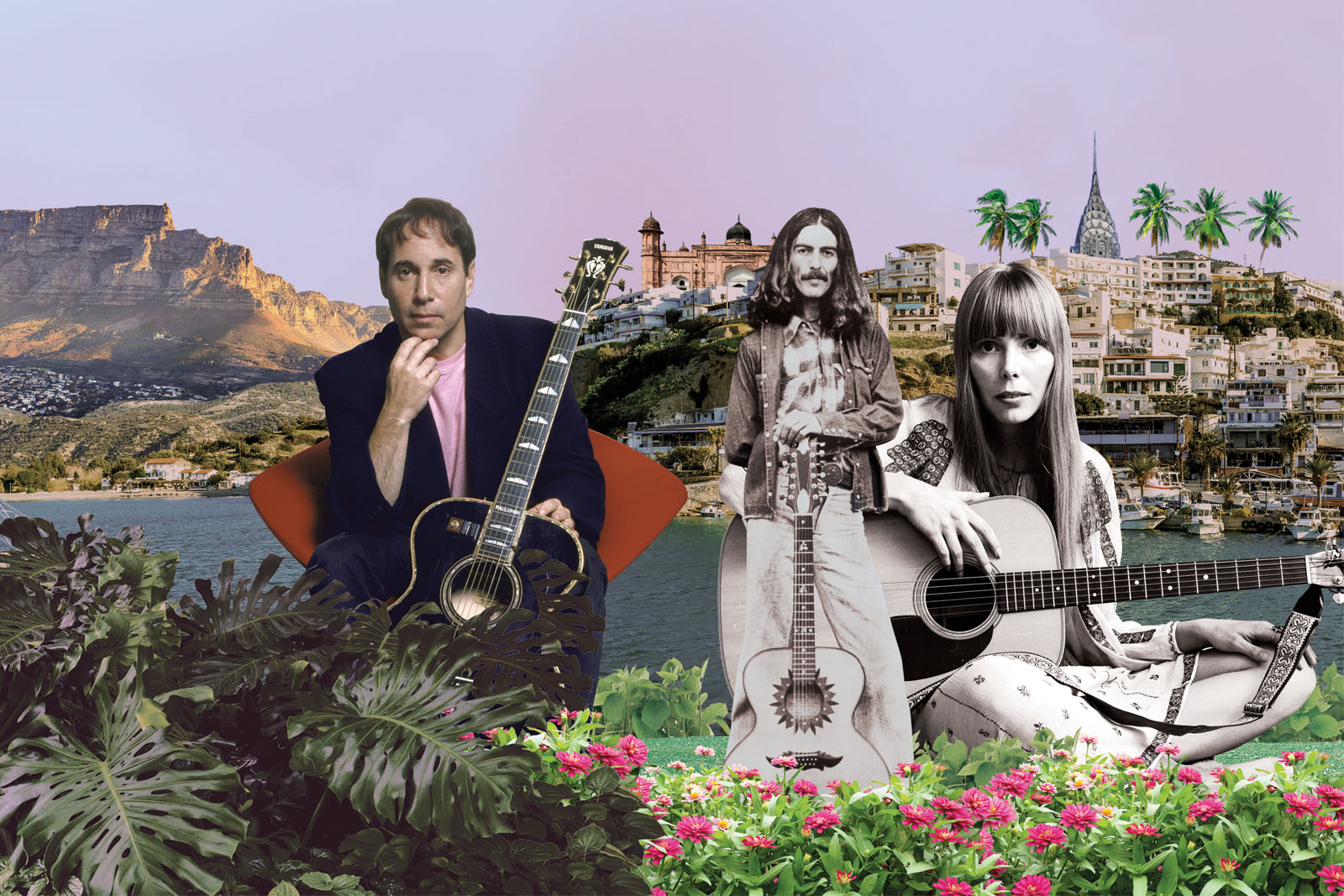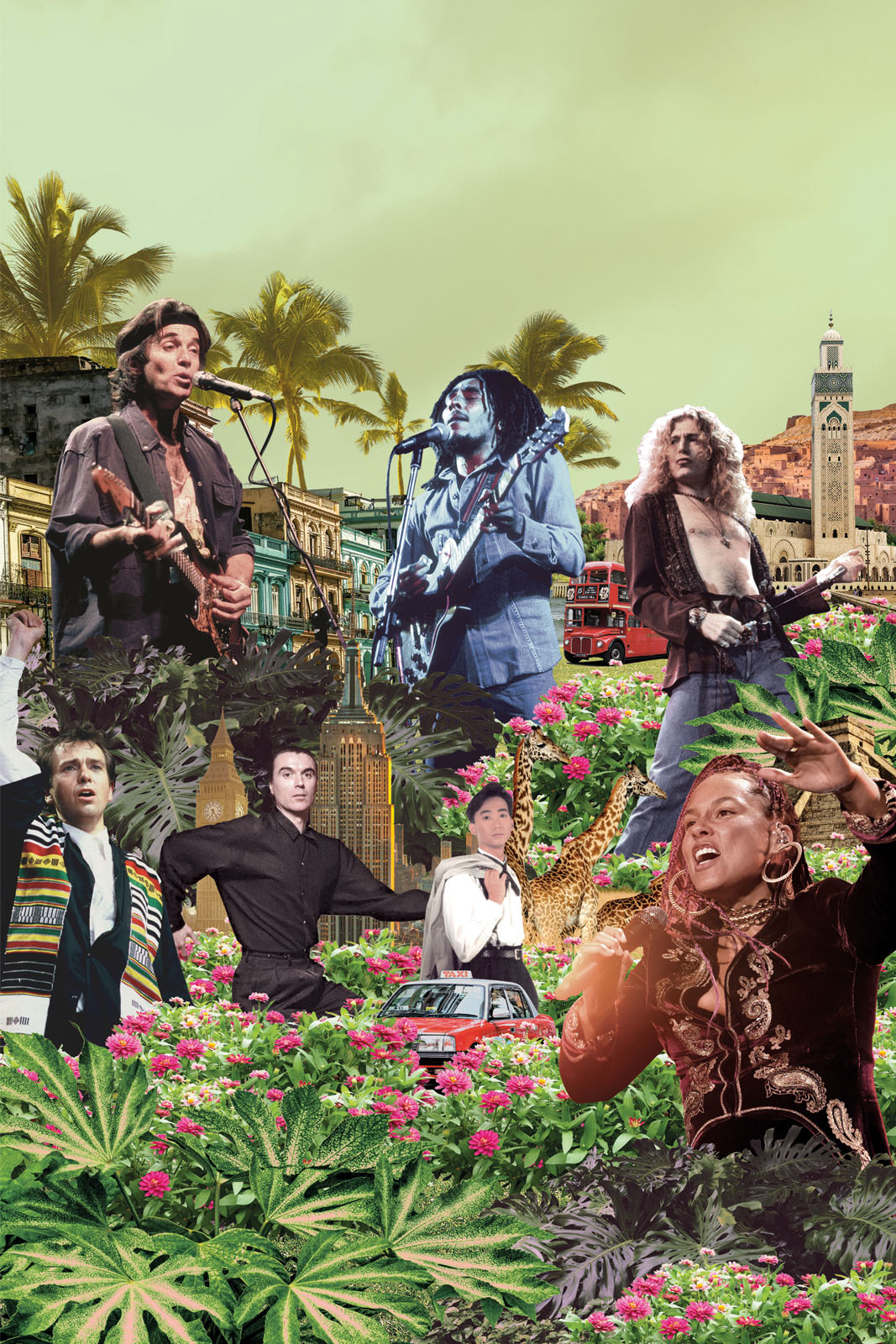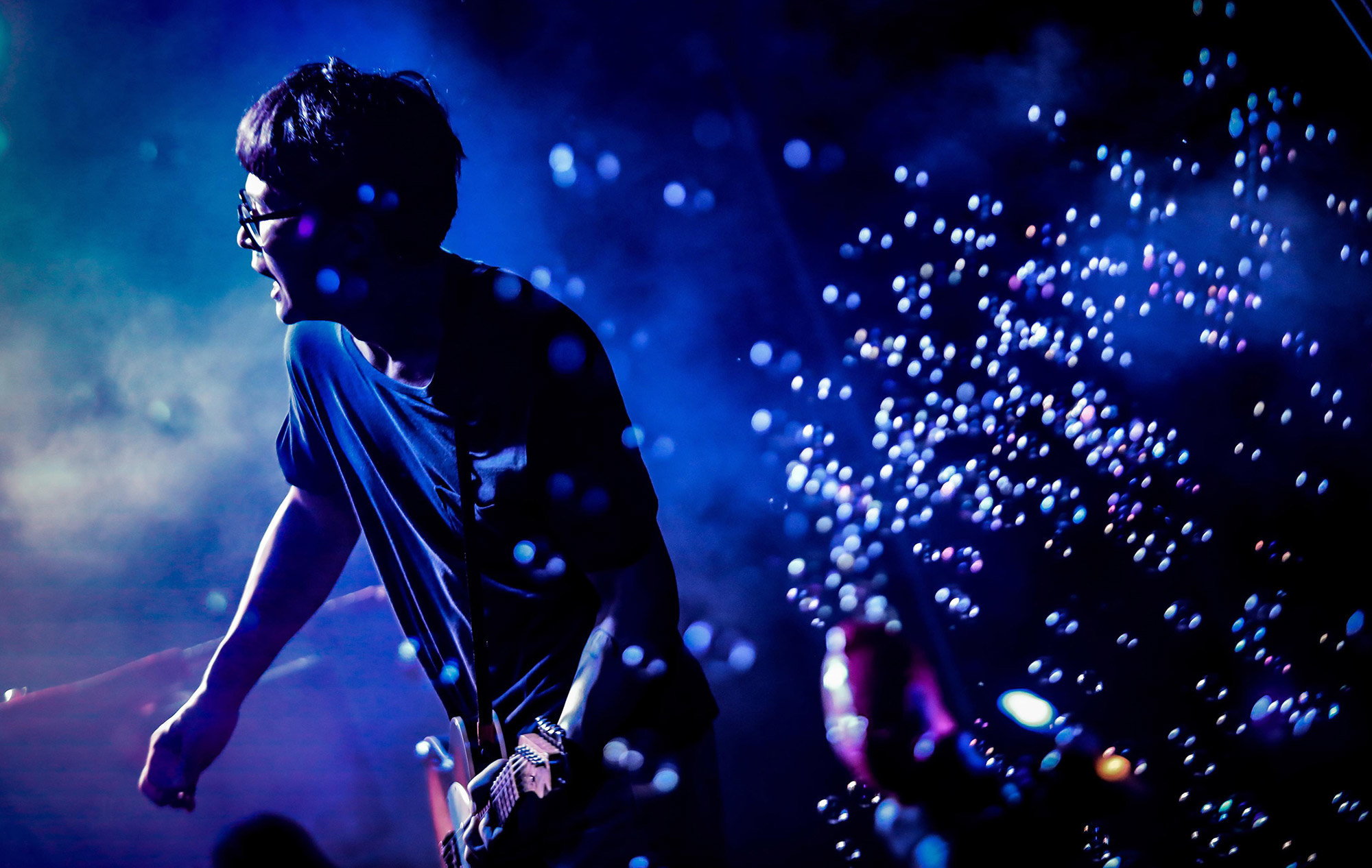A song is like a dream, and you try to make it come true,’ Bob Dylan once wrote. ‘They’re like strange countries that you have to enter.’
Then the song is done, and for the listener, you are either taken along on the journey to see that strange country – or you stay at home.

If it’s the greatest songwriter of all – that’d be Bob Dylan, according to Rolling Stone magazine and probably 90 per cent of music critics – then there’s no question. You go. In Dylan’s songs, you might go to real places: a market place in Savanna-la-Mar, drinking white rum in a Portugal bar in his plaintive travelogue Sara. Or it might be the mysterious land of One More Cup of Coffee, populated by knife-wielding elders and soothsaying daughters.
But above all Dylan is a traveller in the American heartlands. ‘Some people, they tell me,’ he sings in I Feel a Change Comin’ On, ‘I got the blood of the land in my voice.’
Most great artists sing of their place and their time. But in this article, part of our Clockenflap festival special, we’re doing something different: we’re celebrating the great musical travellers, the artists who went out to find the world and brought it back in their lyrics and melodies.
1. Ravi Shankar (1920-2012)
Ravi Shankar was the most revered Hindustani classical musician of his time. He was sometimes bemused and even annoyed by the hippy audiences who flocked to his performances, inspired by his friend George Harrison. But he remained interested in the possibilities of marrying the Western and Indian traditions through his performances and compositions alongside conductor André Previn and violinist Yehudi Menuhin – as well as his Beatle fan (see George Harrison).
2. João Gilberto (1931-)
American guitarist Charlie Byrd brought back more than coffee from his trip to Brazil in the late 1950s. There, he’d encountered bossa nova, a beat and a rhythmic plucking style he would adopt in a landmark collaboration with the West Coast saxophonist Stan Getz. That led Getz to link up with the man who invented bossa nova: Brazilian guitarist João Gilberto.
The opening song on their album, The Girl from Ipanema, would become synonymous with the soft, commercialised version of bossa nova. The highly idiosyncratic Gilberto, known simply in Brazil as O Mito (‘The Legend’) would continue to follow his own winding path between jazz, pop and the musical style he made his own.
3. Celia Cruz (1925-2003)
Not all musical travellers move between countries by choice. The singer Celia Cruz was not allowed back into her native Cuba after the 1959 revolution. But few artists have carried their country’s music as successfully as she did. First in Mexico and then in the US, Cruz became the most popular Latin artist of the 20th century, taking rhumba, son and mambo into the mainstream.

4. Miles Davis (1926-1991)
In 1949, jazz trumpeter Miles Davis travelled to Paris, where he found himself feted as the true artist he was – and in the arms of his Left Bank muse Juliette Gréco. That European cool materialised in his response to the ‘hot’ rhythms of swing and bebop. And as a true artist, he continued to travel – through genres and geographically, as in Sketches of Spain, the extraordinary 1959 reinterpretation of Joaquín Rodrigo’s Concierto de Aranjuez.
5. Toru Takemitsu (1930-1996)
The post-war Japanese composer and theorist made his name with the quintessential Western form: his 1957 Requiem. He gradually embraced his native music with the encouragement of his mentor, John Cage, and ‘recognised the value of my own tradition’. He reached a wide audience with his film scores, including Akira Kurosawa’s 1985 period tragedy Ran, but continued to explore, culturally and musically: his 1981 work Dreamtime was inspired by a visit to a gathering of indigenous Australians in the Northern Territory.
6. Hugh Masekela (1939-2018)
The young boy playing piano in an illegal bar for miners in apartheid South Africa would soon acquire some pretty impressive sponsors. Louis Armstrong sent him a trumpet. Yehudi Menuhin secured him a place at London’s Guildhall School of Music. Harry Belafonte sponsored him in the US. Chart hits, high-profile collaborations and rockstar excess followed. After his 1987 Nelson Mandela inspired song Bring Him Back Home came joyfully true, Masekela cleaned up, returned home and spent his later years uniting the sounds of the African continent through his magical trumpet playing.

7. Paul Simon (1941-)
If Paul Simon’s career had ended after he and Art Garfunkel broke up in 1970, he’d have gone down as one of America’s most affecting musical portraitists – and the man behind the all-time anthem of lonely young travellers, Homeward Bound. But he went on to explore new beats and routes. His fateful decision to record with the South African a cappella group Ladysmith Black Mambazo resurrected his career and created one of the bestselling crossover albums of all time: 1986’s Graceland. Why ‘fateful’? Because his decision to break the cultural boycott imposed on the apartheid regime still enrages some musicians to this day – even if no one ever questions Simon’s motivation was anything other than purely musical, nor the magic of the resulting tracks.
8. George Harrison (1943-2001)
Paul McCartney had the English whimsy, John Lennon the American rock’n’roll edge. But it was The Quiet Beatle who ventured furthest from their Liverpool hometown in search of enlightenment and musical inspiration. His friendship with Ravi Shankar introduced Indian philosophy and music to the Woodstock generation; and his charity Concert for Bangladesh brought developed and developing worlds together almost 15 years before Live Aid.
9. Joni Mitchell (1943-)
Joni’s journey from repressive smalltown Canada to the New York folk scene and hippie Laurel Canyon domestic bliss is well documented in her songs (no one documents more faithfully). But then she escaped California to find a new self, musically and spiritually. And it was in a resort on the Greek island of Crete that she bid her immortal farewell to the backpacking life in Carey (‘I’m sad to leave but it’s really not my home/I miss my clean white linen and French cologne’).

10. Ry Cooder (1947-)
Cooder is one of our most intrepid and influential traveller/collaborators. He worked with the great Malian musician Ali Farka Touré in 1994. But it was his 1997 album, The Buena Vista Social Club, that created one of the most heartwarming music stories of recent years. As recorded in Wim Wenders’ fine documentary of the same name, Cooder brought a bunch of 1940s Cuban son musicians out of retirement to record the album. They’d go on to tour – and charm – the world.
11. Bob Marley (1945-1981)
Following an assassination attempt in 1976, Bob Marley fled his native Jamaica and made a new life in London. His exile album, Exodus, had flavours of US and British rock and funk. But it was Marley’s version of reggae that would conquer the world, influencing everyone from Stevie Wonder to The Police, The Clash and Lauryn Hill (who had five children with Marley’s son Rohan).
12. Robert Plant (1948-)
Like many of the British rock gods – and he was the most godlike – Plant was inspired by the bluesmen of America’s south. But in the 1970s, he strapped on his backpack and his musical travels – especially in Morocco – culminated in the epic track, Kashmir. When he and guitarist Jimmy Page reunited for MTV’s Unplugged in 1994 it was with an Egyptian orchestra as their backing band.
13. Peter Gabriel (1950-)
Genesis was a progressive rock group with a distinctively surreal English aesthetic and a lead singer given to wearing bizarre costumes. But following his departure from the band in 1975, that singer, Peter Gabriel, would become the driving force behind the movement that became known as ‘world music’. On record and through the Womad (World of Music, Arts and Dance) festival he co-founded, he united different musical traditions, brought artists from developing nations to an international audience and campaigned so effectively on human rights that the Nobel prize committee awarded him a special Man of Peace award in 2006.
14. David Byrne (1952-)
‘David Byrne collects wonder from the world around him and sets it to music,’ says World Cafe’s Talia Schlanger. The seminal voice of New Wave has ventured far from the New York art-angst of his old band Talking Heads. He has a passion for obscure Brazilian music and Vietnamese cookbooks; and he headlines Clockenflap’s Saturday lineup this year.
15. Wong Ka-kui (1962-1993)
Beyond had just become Hong Kong’s most successful band when its singer and leading light, Wong Ka-kui, decided to channel his energies in other directions – towards Africa. His visit to Kenya was a creative triumph (Amani, with its African backing choir, became one of the band’s most popular songs). Fifteen years after his accidental death in Japan he remains one of Hong Kong’s most revered musicians.
16. Alicia Keys (1981-)
Like Nina Simone, a musical traveller of a previous generation, Alicia Keys was a classical music prodigy who swapped the concert piano for the studio and a career that has combined groundbreaking music with groundshaking activism. She has travelled widely in Africa as part of her Keep a Child Alive campaign. And in her 2016 short film Let Me In she memorably imagined rich LA inhabitants as refugees across the wall in Mexico.
Clockenflap takes place at Hong Kong’s Central Harbourfront over 9-11 November. See the full line-up at clockenflap.com













